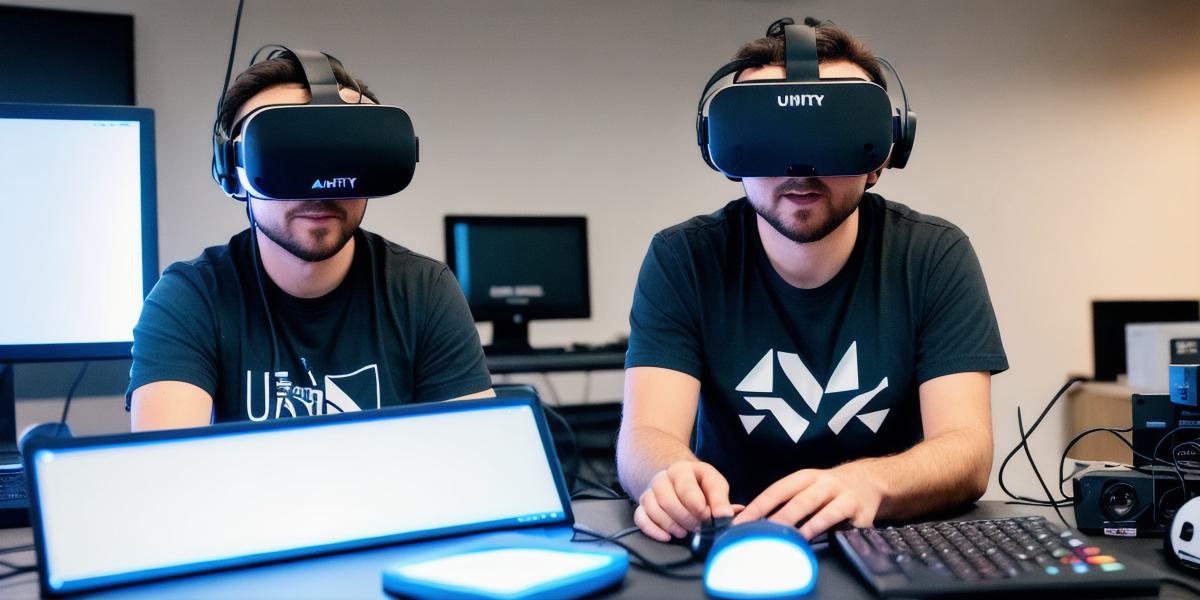Augmented Reality (AR) technology is rapidly gaining traction in various industries, including gaming, education, and marketing. One of the most popular tools for creating AR experiences is Unity, a powerful game engine that also supports AR development. In this article, we will walk you through the process of getting started with Unity AR development, covering everything from the basics to advanced techniques.
Table of Contents
-
Introduction to Unity AR Development
-
Setting Up Your Development Environment
-
Creating Your First AR Scene
-
Adding Interactivity to Your AR Scene
-
Advanced Techniques for Unity AR Development
-
Case Studies and Real-Life Examples
-
Frequently Asked Questions (FAQs)
Introduction to Unity AR Development
Unity is a cross-platform game engine that supports 2D, 3D, and AR development. It is widely used in the gaming industry but also has applications in other fields such as education, marketing, and entertainment. One of the key features of Unity is its support for AR development, which allows you to create immersive experiences that blend virtual content with the real world.
In this article, we will focus on getting started with Unity AR development, covering everything from the basics to advanced techniques. We will use case studies and real-life examples to illustrate how Unity can be used in various industries and provide you with practical tips for creating your own AR experiences.
Setting Up Your Development Environment
Before you start developing AR experiences with Unity, you need to set up your development environment. Here are the steps you need to follow:
- Download and install Unity from the official website (https://unity3d.com/get-unity).

- Create a new project in Unity by clicking on "New Project" in the top menu bar.
- Select "AR Foundation" as the template for your project. This will provide you with a basic AR scene and tools for creating AR content.
- Choose the platform you want to develop for (e.g., iOS, Android, or both).
- Click on "Create Project" to create your new AR project.
Creating Your First AR Scene
Now that you have set up your development environment, let’s create your first AR scene. Here are the steps you need to follow:
- Open your new AR project in Unity.
- In the Hierarchy window (located on the left side of the screen), click on "Add > GameObject" to add a new object to your scene.
- Select "AR Camera" from the list of available game objects. This will add a default AR camera to your scene.
- In the Inspector window (located on the right side of the screen), adjust the settings for the AR camera as needed. For example, you can change the field of view or set up multiple cameras for a more complex AR experience.
- Click on "Play" in the top menu bar to test your AR scene on a device or emulator.
Adding Interactivity to Your AR Scene
Once you have created your first AR scene, you can start adding interactivity to make it more engaging. Here are some techniques you can use:
- Use scripting: Unity supports C and JavaScript scripting languages, which can be used to add interactive elements to your AR scene. For example, you can create a script that detects when the user taps on an object in the real world and triggers a virtual action.
- Use Animation: You can use animation to make objects in your AR scene move or change appearance in response to user input. For example, you can create an animation that makes a character move when the user taps on it.
- Use Plugins: Unity has a wide range of plugins available that can be used to add interactivity to your AR scenes. For example, the Vuforia plugin can be used to track markers in the real world and trigger virtual content in response.
Advanced Techniques for Unity AR Development
Once you have mastered the basics of Unity AR development, you can start exploring more advanced techniques. Here are some tips:
- Use Real-Time Rendering: Unity supports real-time rendering, which allows you to display virtual content in real time on a device or emulator. This is particularly useful for creating AR experiences that require fast and responsive interactions with the user.
- Use Multiplayer: Unity supports multiplayer development, which allows you to create AR experiences that can be played by multiple users on different devices. This can be particularly useful for creating collaborative games or educational experiences.
- Use Machine Learning: Unity has integrated support for machine learning, which can be used to create more advanced AR experiences. For example, you can use machine learning algorithms to track the user’s movements and make virtual objects respond in real time.
Case Studies and Real-Life Examples
Now that you have an understanding of the basics and advanced techniques of Unity AR development, let’s look at some real-life examples of how Unity is being used in various industries:
- Gaming: Unity is widely used in the gaming industry to create both 2D and 3D games for various platforms. For example, the popular game "Pokemon Go" was developed using Unity.
- Education: Unity is also being used in education to create interactive learning experiences. For example, the app "Endless Alphabet" uses Unity to teach children the alphabet by creating a virtual world that responds to their actions.
- Marketing: Unity is being used by companies to create immersive marketing experiences. For example, the Coca-Cola Company created an AR experience using Unity that allowed users to see how their products would look in real life before making a purchase.
Frequently Asked Questions (FAQs)
Here are some frequently asked questions about getting started with Unity AR development:
- Do I need any prior experience to get started with Unity AR development?
No, you don’t need any prior experience to get started with Unity AR development. However, it can be helpful if you have some basic programming skills or experience with game engines. - Can I develop AR experiences for both iOS and Android platforms using Unity?
Yes, you can develop AR experiences for both iOS and Android platforms using Unity. You will need to set up separate projects for each platform, but you can use the same assets and scripts across both projects. - How do I track markers in my AR scene?
There are several ways to track markers in your AR scene, including using Vuforia or ARKit plugins. These plugins allow you to create markers that can be recognized by the AR camera and trigger virtual content in response. - Can I use Unity for developing 2D games?
Yes, Unity supports 2D game development as well. You can create 2D games using Unity’s built-in tools or by using third-party assets and plugins.
Conclusion
In conclusion, Unity AR development is a powerful tool that can be used to create immersive experiences in various industries. With its easy-to-use interface and extensive library of assets and plugins, Unity provides a great starting point for developers who want to explore the world of AR. By following the tips and best practices outlined in this guide, you can create engaging and interactive AR experiences that will capture the imagination of your users.
